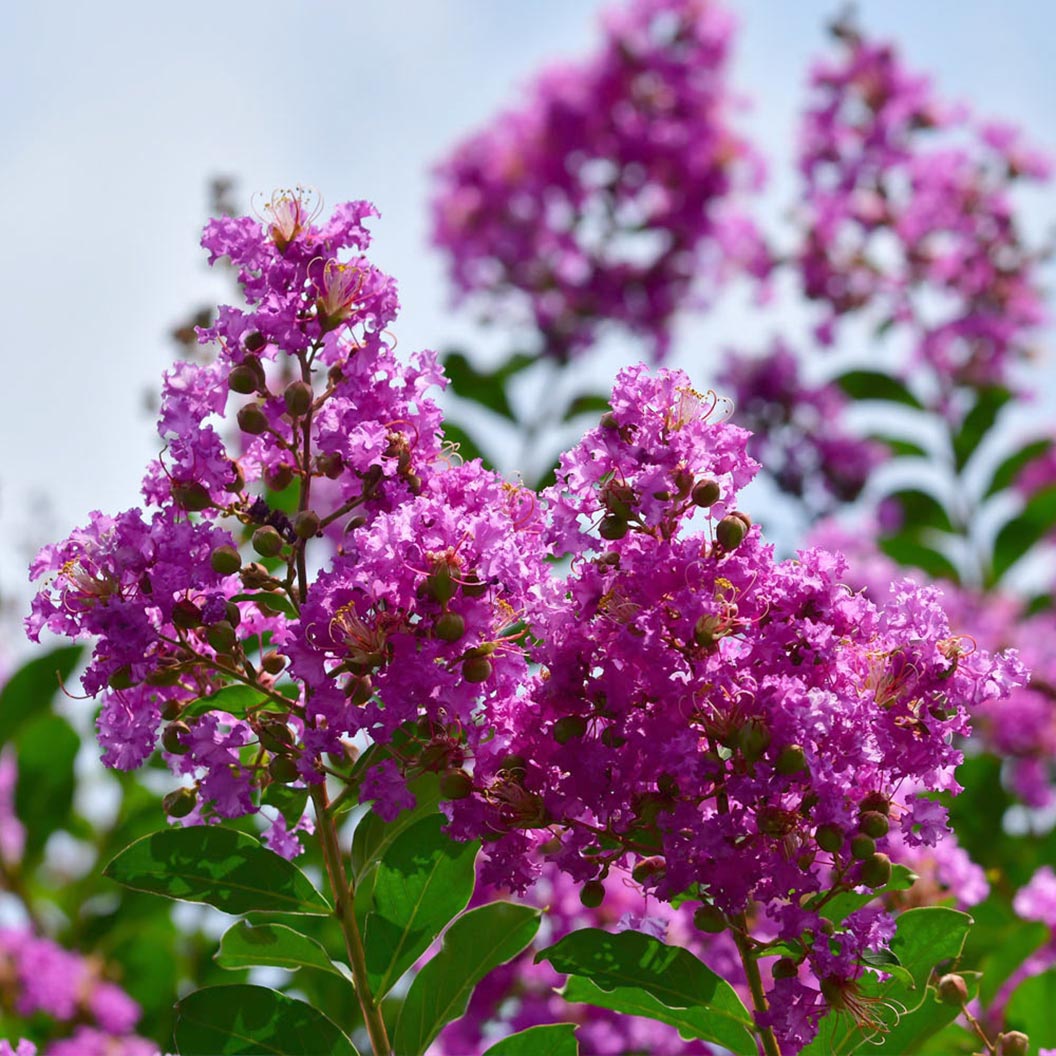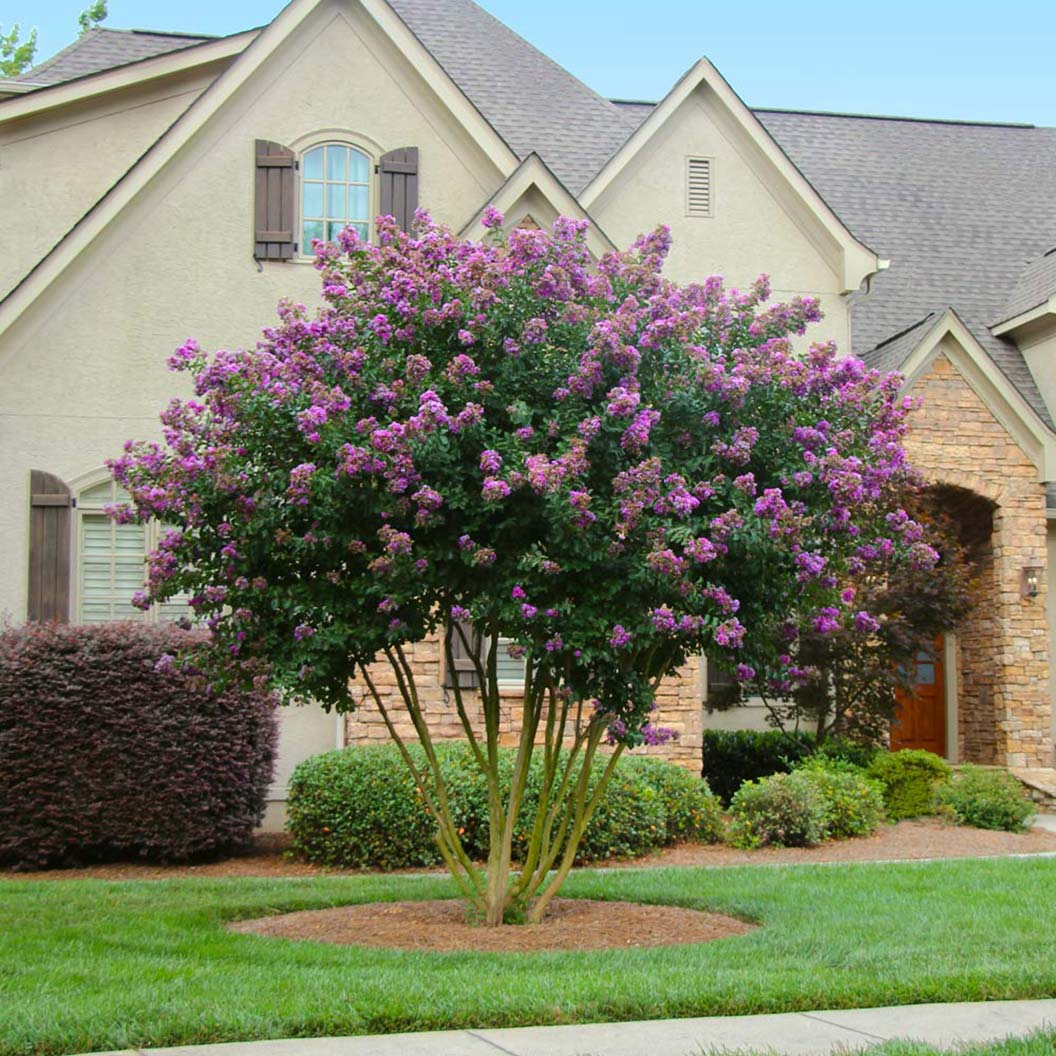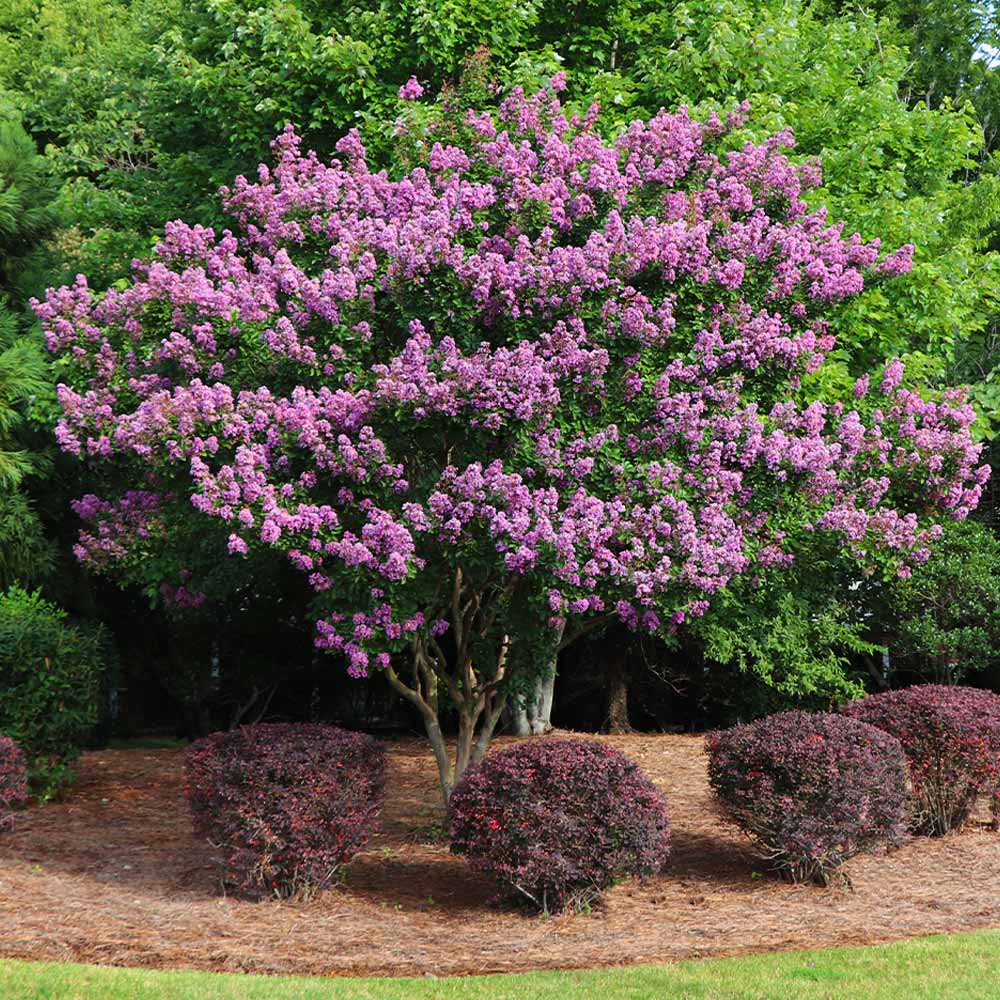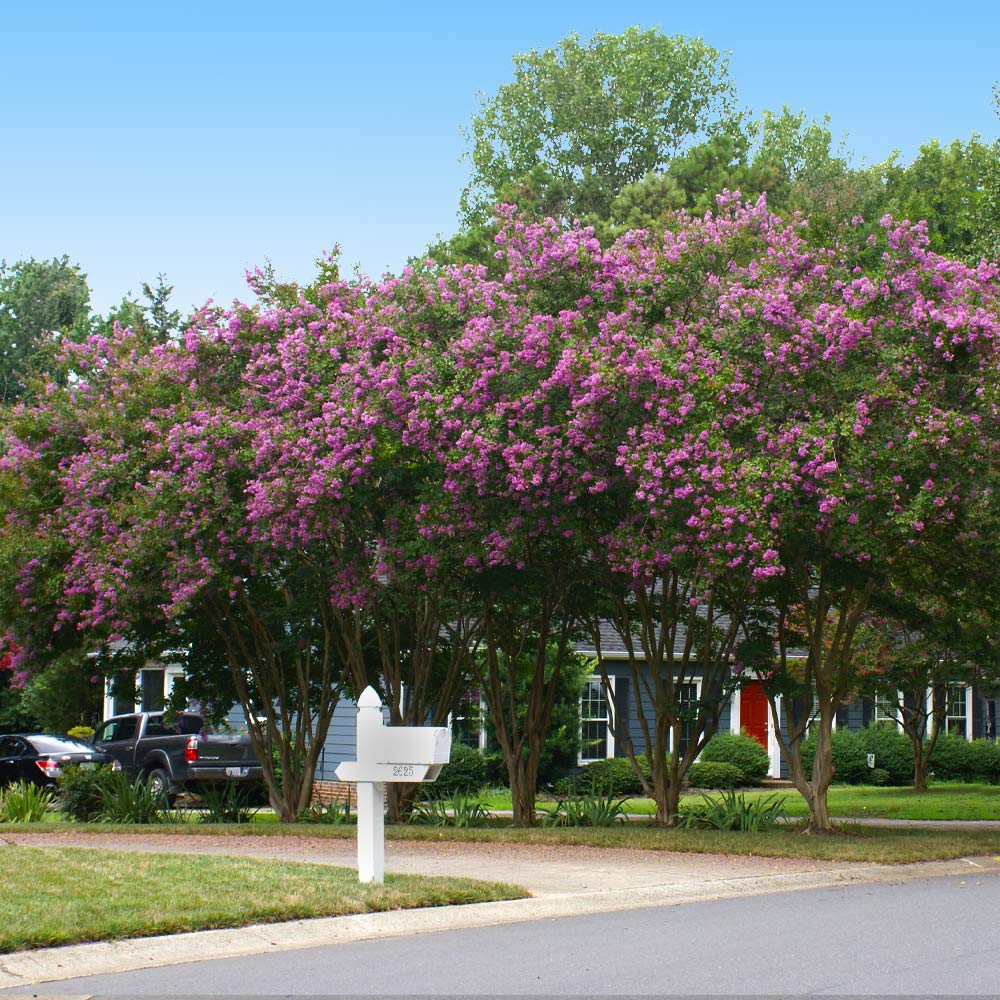Amazing Purple Blooms on a Low Maintenance Crape Myrtle
- The darkest purple on a crape myrtle!
- Low maintenance
- Highly drought tolerant
The royal purple colors of the Twilight Crape Myrtle have been difficult to find until now!
With large, lightly fragrant flower clusters that bloom from early June until frost, it can be grown as a broad shrub or as a tree.
This is one of the few crape myrtles that bloom deep purple flowers for 70 days!
Twilight Purple Crape Myrtles grow up to 20-25 feet tall, making it a popular choice for lining driveways, roadways, fences, or in groupings, and also, as a stunning stand-alone ornamental for your yard.
The leaves on the Twilight unfold in late Spring with a display of bronze color that becomes a deep green during the Summer months. These will change to yellows, oranges, or burgundy in the fall.
For even more color, the bark changes from the smooth mottled gray that gradually peels off in early Summer to reveal a light pink bark that darkens to reddish brown.
The rich purple flowers are an incredible contrast to the subtle colors of the bark.
This variety of Lagerstroemia fauriei have been bred for hardiness. Once established, they are extremely drought tolerant and have a vigorous growth rate.
Twilight crape myrtles do best in full sun and love acidic soil.
These crape myrtles are easy to grow and a delightful addition to any yard. Besides making a wonderful barrier, they are resistant to deer and rabbits, and do well in most growing conditions.
Planting & Care
The Twilight Crape Myrtle (Lagerstroemia indica 'Twilight') is a fast growing tree gaining anywhere from 3-5 feet a year in growth. Recommended for FULL SUN in USDA growing zones 7-9, with proper care, this crape myrtle will reach a mature height of 20-25 feet and width of 10-20 feet. The leaves that emerge in late spring will be bronze in color and then turn to a deep green during the summer months. Large, royal purple blooms appear in June that stay on your tree all through summer and the bark will also shed its gray appearance to reveal a light pink bark underneath. This will eventually turn into a reddish brown color. Once fall comes, the leaves will start turning to shades of yellow, orange and/or burgundy and will eventually fall off to prepare for winter dormancy.
Choosing a location: Crapes are FULL SUN lovers so try and find a spot where they will get as much sun as possible. Without the proper exposure your blooming will be substantially reduced or it may not bloom at all. The Twilight is very adaptable to many soil types so just be sure that the area you’re looking to plant has adequate drainage when watering.
Planting directions:
1) After you have found your planting area, make your hole twice as wide as the root ball and just as deep.
2) Carefully remove the myrtle’s root ball from the container. Lightly tapping the container around the bottom will help free it up without causing too much damage to the root system.
3) Lightly comb your hands over the root ball to free up the roots a bit before planting.
4) Place your tree in the hole and make sure that the root crown (where the root ball meets the trunk(s) of the tree) is level with the soil surface. Crapes need to be able to pull oxygen into their root systems so covering them too much may inhibit their growth.
5) Tamp down the soil lightly as you backfill the hole to prevent air pockets from forming and then water after you’ve finished to settle the soil.
6) Mulch the area around the tree to conserve water moisture and deter competing weeds and grasses from growing.
Watering: Myrtles are quite drought tolerant but may need a bit more attention with watering during the hot summer season. Depending on your soil, there may need to be more frequent waterings, especially those with very sandy soils. After planting, water regularly to start. If the climate is hot you may need to water up to five times weekly especially in lighter soils. During the cooler seasons you’ll only need to water once weekly. Proper soil moisture is important in the hot season so that you’ll have a healthier tree and better looking blooms.
Pruning: Crape pruning is always a “mixed bag” if asking anyone when and how to prune. “Crape murder” is a common term heard with those who go far beyond what is necessary when trimming their myrtles. Prune in the late winter before any of the growth begins. If done in the late fall you will jeopardize the tree’s dormancy state which can lead to the tree dying. Sterilize your cutting tools with rubbing alcohol to ensure no pathogens infect the tree and always make your cuts at a 45 degree angle.
Some prefer to chop off all of the branches at a uniformed height every year leaving the stubs for the winter season that form a ball of growth in the springtime. This is good for height control and a uniformed border but can commonly result in knobby stems and bunchy growths that are easily susceptible to disease and aphid pests. This is where the term “crape murder” comes into play. Only a light pruning of the myrtle is needed to encourage plenty of blooms but “beauty is in the eye of the beholder” when it comes to choosing the shape of your crapes.
For a more graceful tree shape, remove all but 4-5 strong trunks and then remove the lateral branches around the bottom ½ of the tree. To encourage branching, make your cuts on the longer, leggy limbs. Try not to over prune too early, do your basic pruning then allow the tree to grow a bit and then continue shaping over time. Remove any damaged, diseased, or crossing branches during the late winter. Also be sure to remove any suckers or low growths to prevent your crape from looking more shrub-like.
Fertilizing: Your Twilight Crape will greatly benefit from an annual feeding of a high nitrogen fertilizer such as a 20-10-10 slow release formula in the early spring season. If you care to fertilize twice, feed the tree again roughly two months later. Slow release fertilizer will cut back on sucker growths but be aware, excessive fertilizing can lead to tree and limb growth but will inhibit the blooms from forming due to excess amounts of nitrogen.







Comment